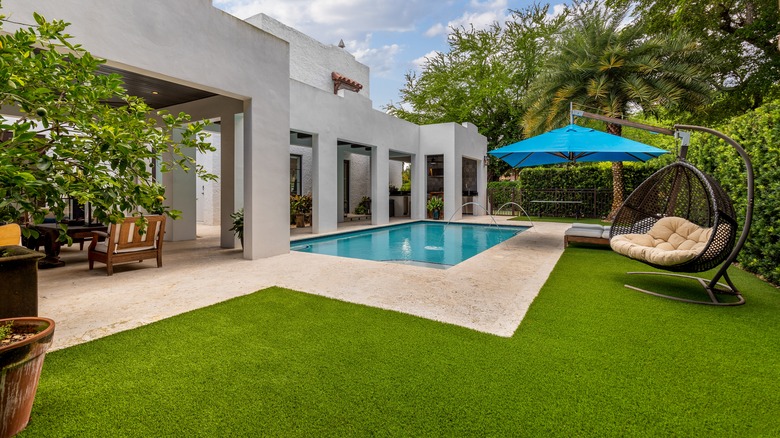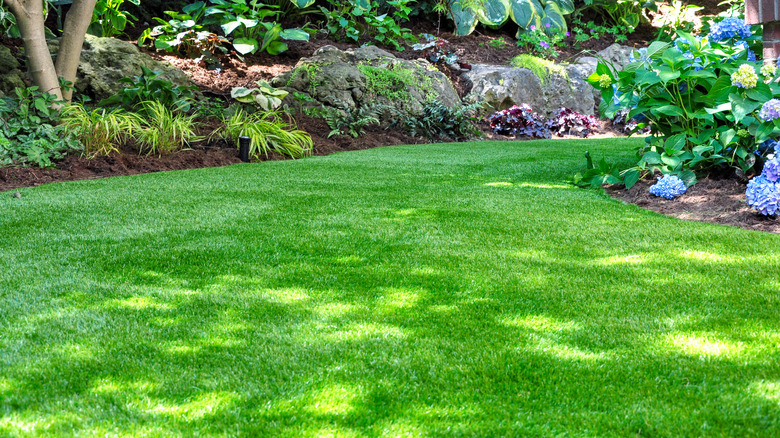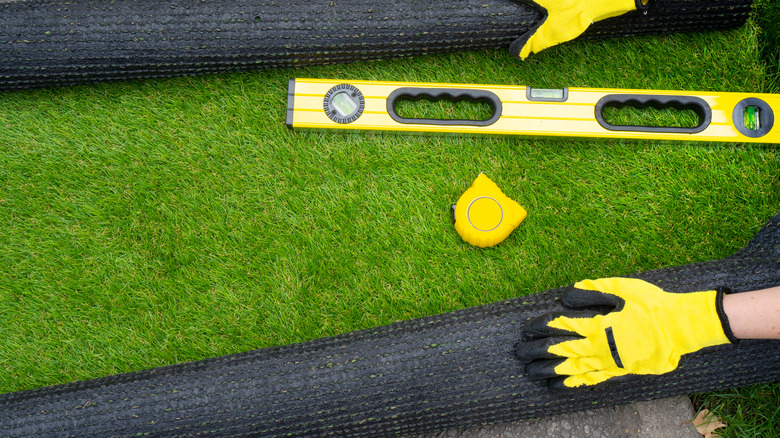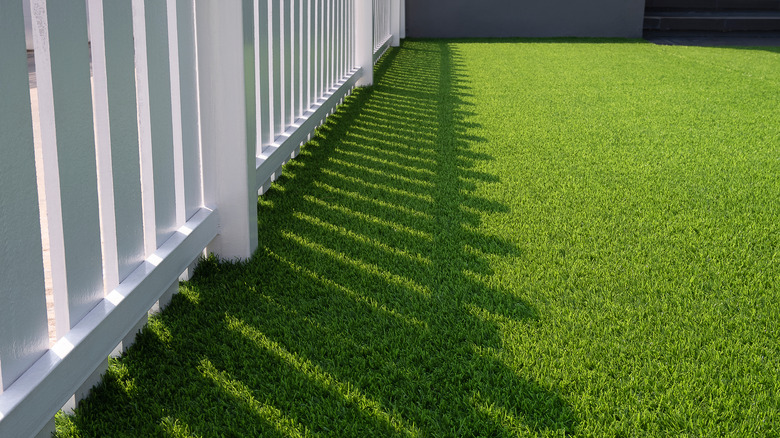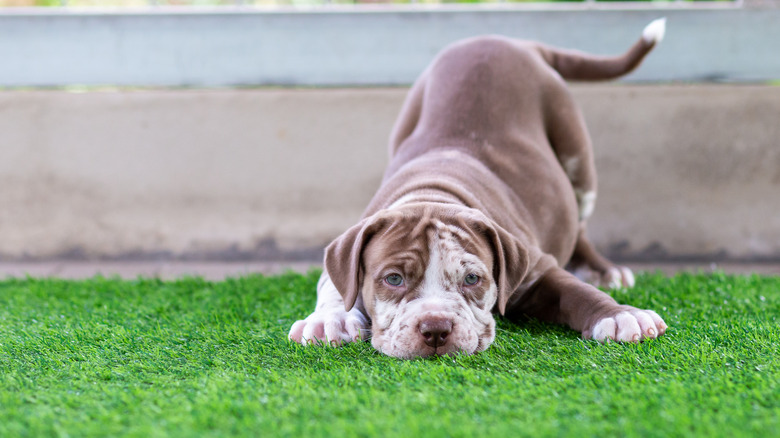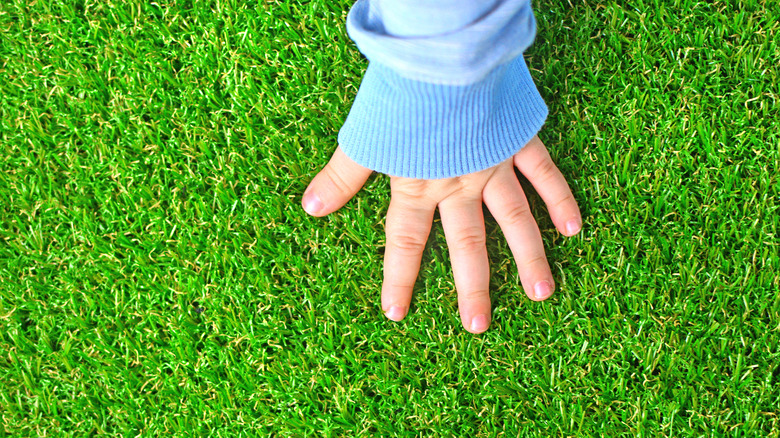5 Things To Know Before Installing Artificial Grass
Are you tired of the dirt, weeds, and constant mowing necessary to maintain a healthy, green yard? Maybe you're thinking that going with artificial grass instead of another bag of grass seed is the best bet. There are many reasons to make the change from natural to artificial grass. For example, Water Footprint Calculator indicates that 60% of a home's water consumption comes from outdoor water use, like watering the lawn. In some states where water shortages are a big concern, it's quite important to make the decision to install drought-tolerant landscaping or artificial grass.
On the other hand, maybe you're concerned if the artificial grass is safe, comfortable under your feet, or easy to manage if you have kids that like to play catch. Before you make the decision to give away your lawnmower, there are a few key things you need to know about these lawns and how they can affect your way of life.
1. There's a cost to going artificial
With a traditional lawn, you may spend money on grass seed, mowing, and fertilizing, but there are also costs associated with the installation of artificial grass as well. Fixr states the installation process typically costs between $3,000 and $7,500. Numerous factors impact that cost, such as the amount of square footage you're installing, if you're investing in premium quality products that create a more natural feel and look, and your location.
When comparing options, look at the types available as well as the costs based on the brand. For example, material options like polypropylene tend to cost less, around $2 to $6 per square foot, whereas other products like nylon cost more, at about $5 to $6 per square foot. You may be able to save some money by installing it yourself, but that's not always an option, and it takes a bit of skill with the proper tools to ensure the best look.
2. Artificial grass is safe
One of the biggest questions people often have about artificial grass is if artificial grass is actually safe to use with your children and pets. It's a valid question since it may seem like adding plastic to your yard is the last thing you want to do. Today's products are highly safe to use, and that should give you some peace of mind.
According to Rubber Flooring Inc, artificial grass is entirely safe because it's made from nylon or plastic materials explicitly designed to be non-toxic. Some products are safer than others, so researching the brand essential. One key concern relates to the type of artificial grass found on sports fields and the rubber crumb filler within these turfs. While it was once believed that the recycled rubber in them carried the risk of being a carcinogen, research now indicates that's not the case. You can still be particular about the grass products you select, ensuring they are the most economical and environmentally friendly for your needs.
3. The environment factor
By the same token, many people believe that using artificial grass isn't safe for the environment and that traditional grass is a better choice. There are a couple of things to know here and a bit of controversy. Some reports, such as from Discover Magazine, go as far as to say that the classic green lawn is a threat to biodiversity and sustainability. That's not always the case, and there are alternatives to grass that could be better.
What we do know is that artificial grass can be a good thing because it enables property owners to conserve precious resources, especially water, according to Rubber Flooring, Inc. You don't have to add toxins to the environment when cutting the grass, either, and some forms are made with recycled materials. Still, this type of grass isn't fully sustainable since it's petroleum-based grass, which can increase your home's carbon footprint.
4. Your furry friends can still use it
For anyone that has a dog that goes outside, the thought of cleaning up waste material from artificial grass can sound a bit overwhelming, but it doesn't have to be a challenge. Synthetic Grass Warehouse offers a few tips for managing this process. The first is to let the solid waste dry out so it is easier to pick up. Once picked up, rinse off the grass with the hose using an enzyme cleaner as needed.
For liquid waste, though, things get a bit more difficult. Here, you'll need to use a sprinkler or hose to wash off the grass areas to encourage the liquid waste to wash through to the turf and base materials under it. You can use enzyme cleaners to help with this process, though you shouldn't use any type of harsh chemical on the surface as it could damage it.
5. It can last for decades if maintained
Installing artificial grass doesn't mean there's no additional maintenance required for your lawn, and that goes beyond just cleaning up from your pets. However, if you maintain it as the manufacturer recommends and stay on top of any issues that arise, it can last as long as 25 years, according to Artificial Grass Liquidators. So, what needs to be done?
First, be aggressive with removing materials that could stain, including everything from coffee and alcohol spills to grease and suntan oil. Remove as much of the material as possible and then using a mild detergent to wash it away. You'll also need to rinse the grass regularly to encourage the removal of debris that can build up in it. During that process, the manufacturer may encourage cross brushing it to help to encourage a longer lifespan for the blades. With a bit of work, you can keep it looking great and add value to your home.
